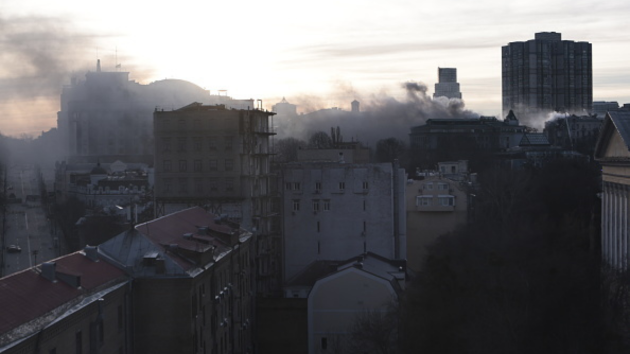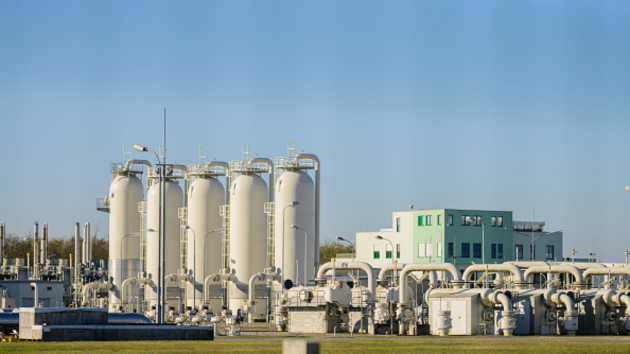What are Israel’s goals in its south Lebanon incursion?
Written by ABC Audio ALL RIGHTS RESERVED on October 3, 2024
(LONDON) — After nearly a year of bloodshed and upheaval, the return of some 70,000 displaced Israeli residents from the regions along the country’s border with Lebanon became one of the most politically pressing issues facing Prime Minister Benjamin Netanyahu and his government, even as they wage a simultaneous war against Hamas in Gaza.
As of Tuesday, the Israel Defense Forces claimed to have launched “limited, localized, and targeted ground raids” in the south of the country in pursuit of this goal. Two divisions — the 98th Paratroopers Division and the 36th Division — are currently involved in the operation, supported by a variety of armored, artillery, commando and infantry brigades, as well as the Israeli air force, the IDF said.
This week’s incursions followed a months-long campaign of targeted killings — “eliminations” in Israeli military and intelligence parlance — and airstrikes that Israel said were intended to degrade Hezbollah’s command hierarchy and infrastructure.
Now, Israeli forces — according to an Israeli security official — have three goals: the removal of the threat of cross-border fire, the targeting of senior militant leaders and the return of displaced Israelis to their homes.
The IDF revealed this week that special forces troops have been operating just inside southern Lebanon for almost a year, destroying fortified Hezbollah positions, weapons caches and tunnels — some of which stretched all the way to the Israeli border.
Hezbollah rockets and drones have posed a constant threat to border regions since Oct. 8, when the Iranian-backed terror group began its cross-border attacks on Israel’s northern communities and nearby military positions.
Hezbollah began its operations the day after Hamas’ Oct. 7 raid on Israel’s south, which left around 1,200 people dead and 250 taken to Gaza as hostages. Hezbollah said the attacks were in solidarity with Hamas and vowed to continue attacks until Israel agreed to a cease-fire in Gaza.
Israel’s subsequent war on Gaza has killed more than 46,000 people, according to the Hamas-run Health Ministry. Israeli military action in Lebanon has killed more than 1,900 people since Oct. 8, according to Lebanese authorities. The United Nations said around 630 Palestinians have also been killed by Israeli settlers and security forces in the West Bank over the past year, with 15 Israelis also killed.
Last month, Netanyahu officially included the return of displaced northern residents in the country’s list of wartime goals.
“I’ve already said, we will return residents of the north safely to their homes,” Netanyahu said. “And that is exactly what we will do.”
The return of these residents remains the prime public justification for Israel’s evolving military operations in Lebanon.
Israel’s grievances date back to the last cross-border war in 2006. After around a month of fierce fighting, the United Nations Security Council unanimously approved Resolution 1701 in a bid to end the conflict.
That resolution stipulated that Israeli forces would leave Lebanon while all Hezbollah forces would withdraw north of the Litani River, some 18 miles from the Israeli border. The Lebanese military would take over control of the vacated area. Ultimately, though, Hezbollah did not withdraw.
Israel has long been pressing Hezbollah to adhere to Resolution 1701. Leaders in Beirut — where Hezbollah wields major political influence through its parliamentary arm — said they still support enforcing the resolution. But Israeli patience for a diplomatic solution appears to be exhausted.
An Israeli security official said during a Tuesday briefing that the nascent ground operation is occurring “right by the border” with no intention of pushing towards the capital Beirut.
“We’re talking about limited, localized, targeted rates based on precise intelligence in areas near the border,” the official said when asked about the limits of the operation.
Meanwhile, repeated IDF airstrikes on the capital Beirut and elsewhere in Lebanon continue. The IDF said it is targeting Hezbollah weapon storage sites, arms manufacturing facilities and leading militants.
Many residents of the southern suburbs have been displaced by bombing and IDF evacuation orders, some spending nights sleeping on the capital’s streets and beaches.
Several security sources told ABC News that the ground operation is expected to last no longer than a few weeks.
A key goal is the seizure of a ridge some 3 miles north of the Israeli border. From there, Hezbollah units have a line of sight into Israel to fire weapons including anti-tank missiles.
Planners also want to destroy any Hezbollah military infrastructure that could be used to infiltrate into Israel or attack northern communities.
IDF spokesperson Rear Adm. Daniel Hagari claimed on Tuesday that Hezbollah was planning an Oct. 7-style “invasion” of northern communities.
Officials said that infrastructure includes tunnels, fortified positions and weapons caches close to the border, storing arms like rocket-propelled grenades, small arms, bulletproof vests, motorcycles and anti-tank missiles.
Hezbollah tunnels are not the same as Hamas tunnels, officials said. The former are built into the rocky terrain of southern Lebanon, as opposed to the soft clay sand of Gaza. This means they are shorter, not networked and mostly used for rocket batteries, weapons caches and trenches.
Some tanks and D-9 armored bulldozers are expected to be used in Lebanese villages close to the border, suggesting the IDF intends to level homes and buildings. Most of the operation will be conducted by infantry forces, the officials said.
The IDF has ordered the residents of around 50 Lebanese villages to evacuate north of the Awali River, around 37 miles from Israel’s border. The IDF also warned civilians not to use vehicles to travel south of the Litani River, which is 18 miles from the Israeli border.
Israeli leaders have not set out a timeline for the ground incursion, nor specified whether Israel intends to retain control over any Lebanese territory.
Israel sought to deter Iran from coming to the aid of its Lebanese allies.
“There is nowhere in the Middle East Israel cannot reach,” Netanyahu said in a statement addressed to the Iranian people on Monday.
One day later, Tehran launched a massive ballistic missile barrage towards Israel in its second direct attack since Oct. 7.
Netanyahu and other Israeli leaders vowed a punishing response. Iran, the prime minister said, “made a big mistake” and “will pay for it.”
Hezbollah — though ravaged by Israeli assassinations and airstrikes in recent weeks — vowed to resist. The group is still firing rockets toward residential areas in Israel, including Tel Aviv.
“The resistance fighters are ready for a direct confrontation with the enemy forces that dare or attempt to enter Lebanese territory and inflict the greatest losses on them,” the group said in a statement.
Eight IDF troops were killed in southern Lebanon on Wednesday, marking the first known Israeli losses of the war on Lebanese territory.
Copyright © 2024, ABC Audio. All rights reserved.







